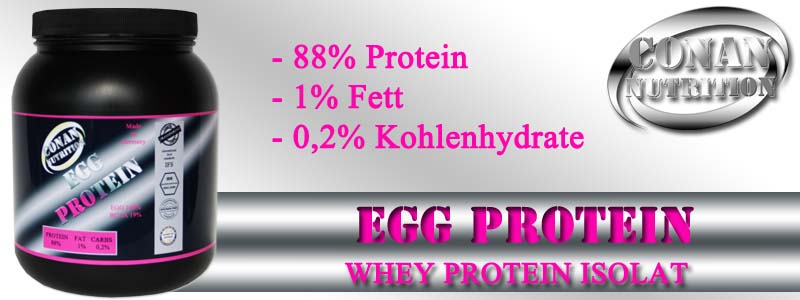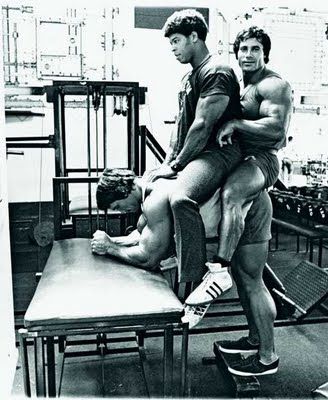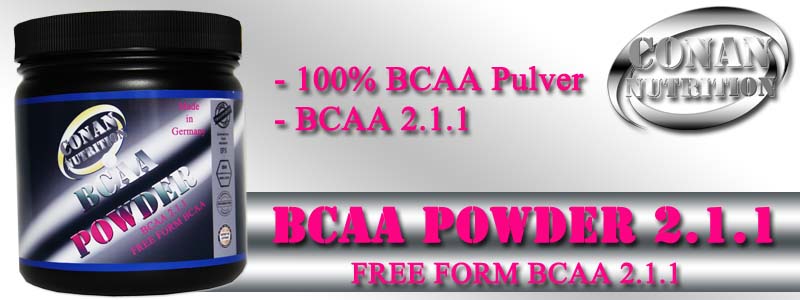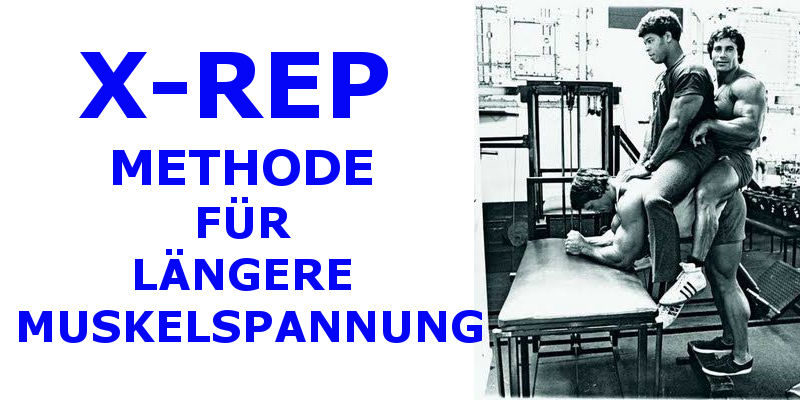Partial repetitions and their variants provide extreme growth stimuli.
A lot has been said about that lately Duration of muscle tension been written. Likewise, about the optimal set duration to trigger muscle growth. However, shorter muscle tensions are best for pure strength building. They help strengthen the ligaments and tendons.
Basically, a to five repetitions are ideal for building strength. However, if you want to build more muscle, you need the muscles longer under tension being held.
 Even top bodybuilders like Ronnie Coleman have great success with higher repetitions. Coleman is toying with the maximum weight in some exercises. But if you watch him work out, you will notice that he does eight to 15 reps on many sets. His various DVDs show the maximum weights with which he can do a repetition in squats and deadlifts. However, something like this is more suitable for a good DVD than good training to build muscle. More about training from Ronnie Coleman>
Even top bodybuilders like Ronnie Coleman have great success with higher repetitions. Coleman is toying with the maximum weight in some exercises. But if you watch him work out, you will notice that he does eight to 15 reps on many sets. His various DVDs show the maximum weights with which he can do a repetition in squats and deadlifts. However, something like this is more suitable for a good DVD than good training to build muscle. More about training from Ronnie Coleman>
However, there are other ways to keep the muscle in tension longer than just doing more repetitions.
–
Steve Holman and Jonathan Lawson have come across a lot over the past few years X-Reps and their variants are written. X-reps are an interesting new method and are similar to an older training technique that has almost been completely forgotten: the so-called „Burns“.
Partial X-Reps are very similar to an older training technique: burns.
Burns were developed in the 1950s as a method to keep muscles under tension for a long time. If someone was unable to complete their repetitions, they would do a series of short partial repetitions - or burns - at the end or beginning of the movement.
Larry Scott was famous for his Burns at the Scott Curls of the same name. He completed it towards the end of the upward movement. After six heavy sets to muscle failure, he had to be helped to bring the dumbbell into the upper position. And then he squeezed out four or six more Burns. Sometimes he did it in the lower position, i.e. at the beginning of the movement. Training by Larry Scott>
was famous for his Burns at the Scott Curls of the same name. He completed it towards the end of the upward movement. After six heavy sets to muscle failure, he had to be helped to bring the dumbbell into the upper position. And then he squeezed out four or six more Burns. Sometimes he did it in the lower position, i.e. at the beginning of the movement. Training by Larry Scott>
Burns are more effective in the lower range of motion when the muscle is stretched. But in order to keep things varied - also to try some new fibers - I think it is useful to do partial repetitions at different points in the movement. Even within a single sentence: You will see this in my example of calf training, which I am about to introduce to you.
Keep in mind that stretched partial repetitions can activate a lot of growth fibers and maybe even split fibers, if such a thing really exists. Using it to train different muscle positions is also more varied. But still: who can object to Larry Scott's results? The man had fantastic arms!
X-REP METHODE
The X-Rep-Methode von Holman and Lawson mainly use partial repetitions in the lower range of motion, that is, in the stretched and half-stretched positions. Occasionally, they also do X-reps in the contracted position; usually during isolation exercises where the muscle is continuously under tension. Most of the time, however, they prefer to do X-reps towards the end of a failure set. At a point where the muscle is stretched and under tension. Holman and Lawson assume that this is the point of the growth zone.
advertising

X-REP METHOD - APPLICATION EXAMPLE - CALF RISES
 Using Standing Calf Raises: Start with two warm-up sets. Then stretch each calf - first 30 seconds, then 60 seconds. For the first work set, you will train with a weight that allows you ten to twelve repetitions. After the failure, lower your heels as low as you can and hold that stretch for ten seconds. Then push the platform as high as you can and complete five quick X-Reps. On the fifth partial rep, stay in the stretched position for ten seconds. If it hurts too much, you can stop at this point.
Using Standing Calf Raises: Start with two warm-up sets. Then stretch each calf - first 30 seconds, then 60 seconds. For the first work set, you will train with a weight that allows you ten to twelve repetitions. After the failure, lower your heels as low as you can and hold that stretch for ten seconds. Then push the platform as high as you can and complete five quick X-Reps. On the fifth partial rep, stay in the stretched position for ten seconds. If it hurts too much, you can stop at this point.
I usually keep going! I get the weight pushed up again - no matter what the cost! Then I do five more X-reps in contracted position. Then I lower the platform a little and hold the muscle in a stretched position for another ten seconds. At this point I stop. I tell my training partner to reduce the weight by 20 kilos and then immediately do another twelve full repetitions. On the twelfth rep, I lower the platform a little and stay in the stretched position for 30 seconds. But then I'm finished too!
I limp out of the leg press and do some calf stretches on a wooden box. Each calf is strongly stretched for 60 seconds, followed by a calf raise with your own body weight. Ouch! Going through this ordeal twice or something like that is all I can manage. Finally, I do one set of seated calf raises with 50 to 100 repetitions. On the last one, I try to hold the contraction for as long as possible and I cry like a little girl - but like a little girl with very strong calves!
Techniques like the X-Reps aren't much fun, but they are hugely effective!
X-reps combined with static stretches really aren't much fun. But despite the pain they cause, X-Reps and Hybrid X-Techniques are one of the best training methods I have ever trained with. And only recently I saw how effective they are: after indulging in a donut diet (I don't recommend it - it's very tasty, but not for building muscle), I gained a lot of weight. I absolutely had to lose weight and gain muscle mass as quickly as possible.
X-reps, combined with overworked muscle stretches and extreme stretching, got my body back in shape in eight weeks. In just eight weeks, I reduced my weight from 100 to a tight 95 kilos and at the same time was able to develop visible abdominal muscles.
As you can see, I lost body fat while adding a lot of strength and muscle at the same time. And that's something I've always found quite difficult.
I immediately noticed that X-Reps - along with stretching the connective tissue that wraps the muscle - are very effective. This was made known by coach John Parrillo and more recently by Dante. Strong stretches loosen the connective tissue around the muscle. This gives the muscle more space to grow. Strength athletes who have stubborn muscle groups often find that the surrounding connective tissue constricts these muscles too much. Stretching, excessive stretches, and X-reps can help improve this condition a little.
X-REPS METHOD CONCLUSION
I can't understand why Burns fell out of favor, as all top bodybuilders used this technique in the 1950s and 60s. In the decades before anabolic steroids became the norm, Burns was able to build incredible muscle. Today, X-Reps and other popular methods have taken on that role. They're painful, but effective!

